Completed Projects
1. Digital Logistics on a Shoestring
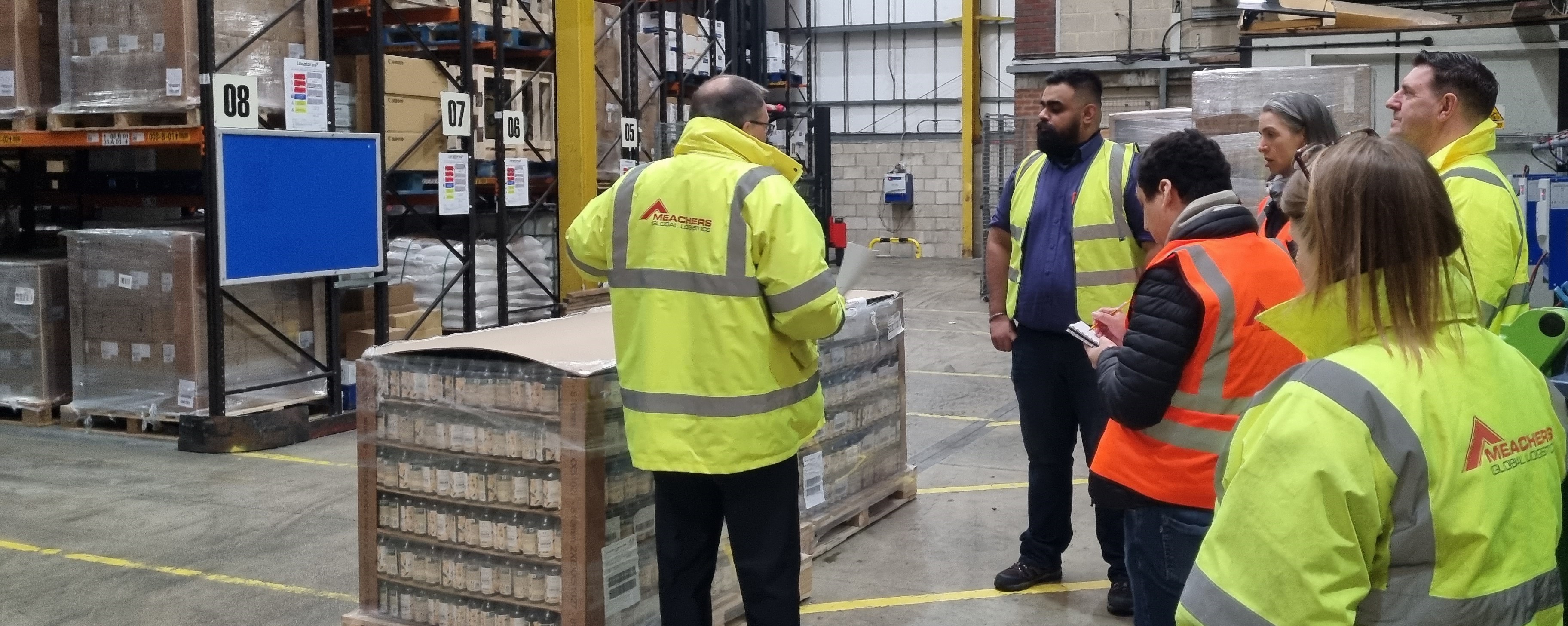
Many small-and-medium-sized logistics companies perceive digitalisation as complex and financially unattainable. In this regard, the vision of this project, part of the Digital Manufacturing on a Shoestring programme, is to increase the digital capabilities of logistics companies using low-cost, easily accessible "off-the-shelf" components. This will be achieved by investigating the challenges the UK logistics SME sector faces, their key competitive factors, their business constraints, and the low-cost digital solutions required as a priority. Overall, the project aims to develop lab demonstrators and industrial pilots of digital solutions so that logistics SMEs can interact with them and explore their potential benefits.
People: Prof. Duncan McFarlane, Jaime Macias, Liz Salter, Dr. Anandarup Mukherjee, Dr. Greg Hawkridge.
2. Low Cost Automation using Off the Shelf Technologies (LoCOST)
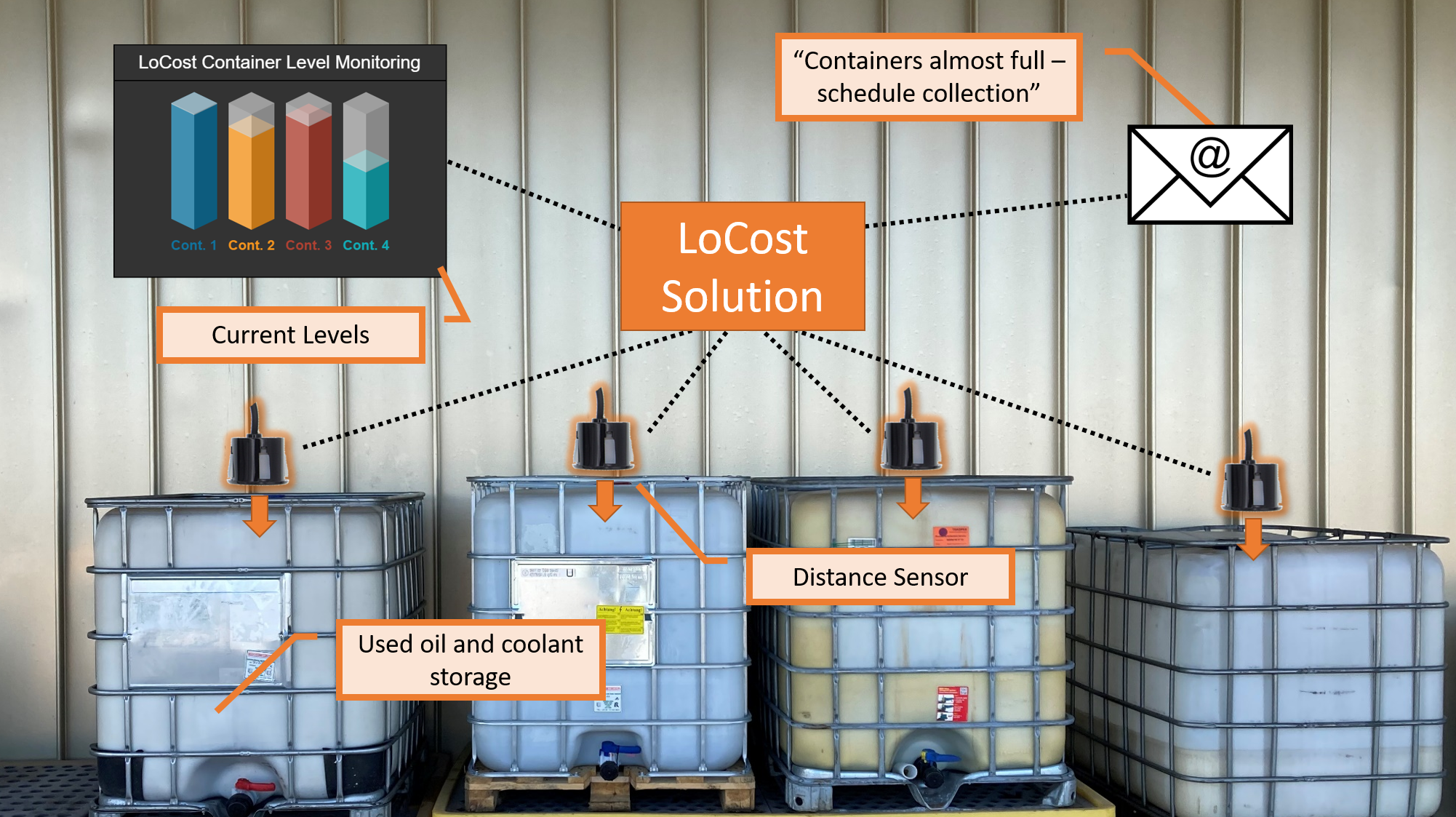
LoCOST (Low Cost Automation using Off the Shelf Technologies) is a research project funded by Boeing with the aim of establishing a pathway, justification and prioritisation for the exploitation of low-cost, off-the-shelf technologies within their operations. The project leverages concepts established in the Digital Manufacturing on a Shoestring project, which focusses on small- and medium-sized manufacturers, and considers how these concepts can be applied within a global manufacturer like Boeing. Focus topics include understanding the common low-cost needs within Boeing, reusable patterns for the secure integration of IoT technologies, simplifying data capture from lab equipment, monitoring consumable stock levels and waste monitoring.
People: Prof. Duncan McFarlane, Liz Salter, Dr. Greg Hawkridge, Dr. Zhengyang Ling, Dr. Anandarup Mukherjee
Project partner: Boeing
3. Next Generation Converged Digital Infrastructure (NG-CDI)

NG-CDI is an EPSRC prosperity partnership project with BT that aims to improve the efficiency of the UK’s digital infrastructure. The project’s showcase highlights all of the exciting, new applications and services that we’d like to see in the next 5 to 10 years such as industrial automation, smart homes, virtual reality, or self-driving vehicles. This poses huge challenges for the network infrastructure in terms of capacity, latency and resilience, among others, necessitating a shift in the current network management. To this end, the DIAL team working at NG-CDI focuses on the following areas: Network automation on the deployment and operation of physical and virtual devices; optimal network maintenance and service availability; network assurance integrating AI and machine learning tools for enhancing performance, user experience and network security; and network analytics for the overall support of the network decision-making.
For more information about this project and its outputs, visit the project’s website.
People: Prof. Ajith Kumar Parlikad, Prof. Duncan McFarlane, Dr. Manuel Herrera, Dr. Alena Puchkova, Maharshi Dhada, Yaniv Proselkov
Project partners: BT, Lancaster University, University of Surrey, University of Bristol
4. CDBB Digital Twin Project
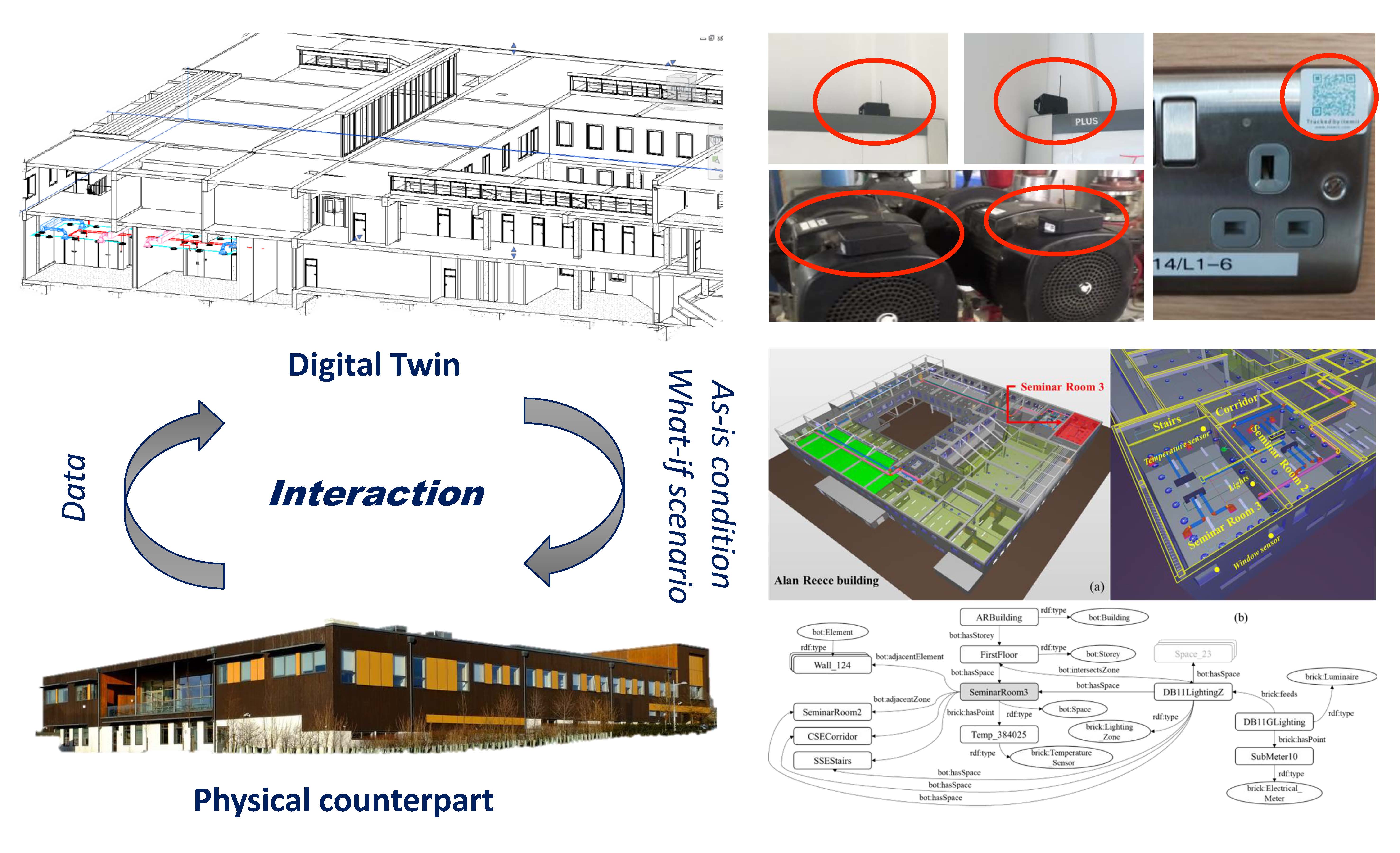
The West Cambridge Digital Twin Research Facility forms part of the Centre for Digital Built Britain’s (CDBB) work at the University of Cambridge within the Construction Innovation Hub (CIH). This project aims to provide a demonstrator to address the challenges associated with the production of a National Digital Twin (NDT), an ecosystem of connected digital twins, securely sharing infrastructure and built environment data to support better economic and societal outcomes. Taking the West Cambridge campus of the University of Cambridge as the case, the developed digital twin acts as a realistic digital representation of assets, processes and systems within the buildings, providing a two-way connection between the physical world and the digital counterpart. Data from the physical world informs the digital twin which enables asset owners and operators to make better operational, maintenance, investment and planning decisions to create value, increase resilience and secure sustainability. Leveraging semantically enriched data management framework and digital twin enabled analytical framework, the following goals are pursued, including- a) Sustainability: To achieve the Zero/Neutral Carbon emission in the West Site Cambridge campus via better energy consumption and management, b) Serviceability: To improve the asset performance and ensure the wellbeing of labour in West Cambridge and optimal working environment.
People: Prof. Ajith Parlikad, Dr. Xiang Xie, Dr. Nicola Moretti, Dr. Jorge Merino
Project partners: Computer Laboratory at the University of Cambridge
5. Enhancing the Port Efficiency Through 5G and Predictive Data Analysis (5G Ports)
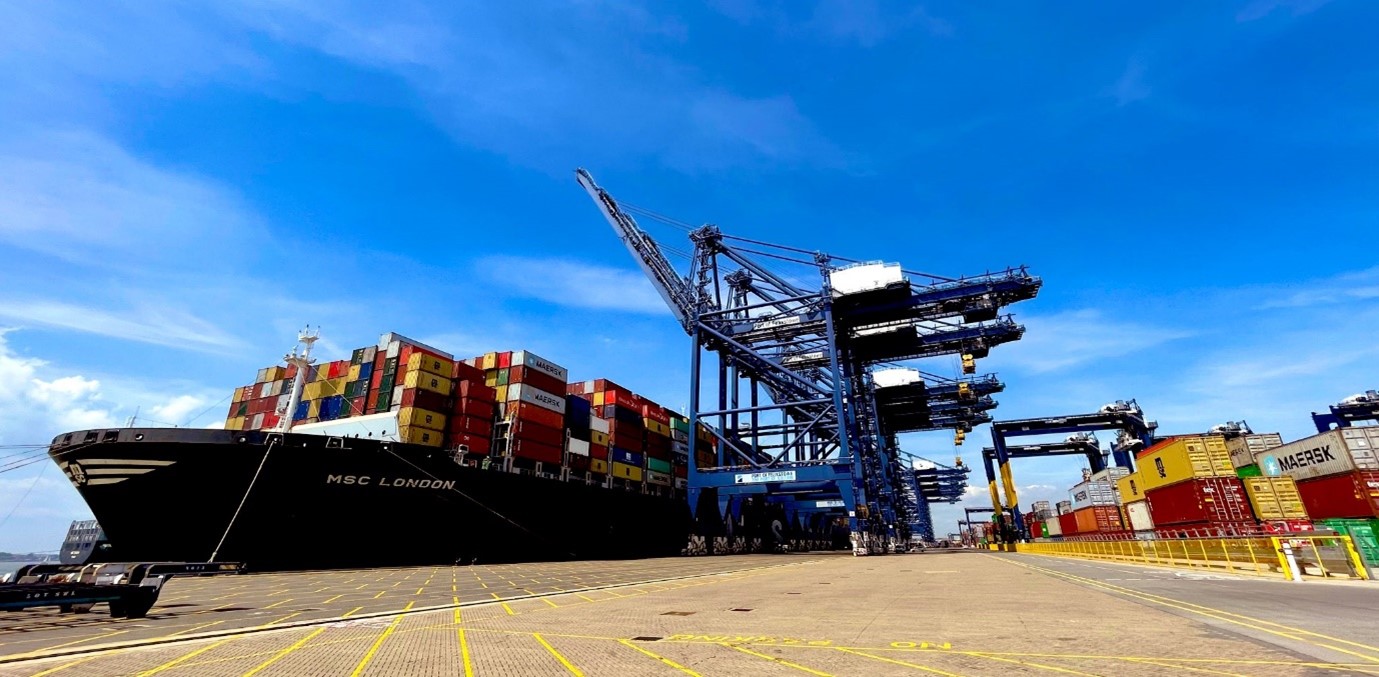
This Department for Culture, Media and Sports funded project under the 5G Testbeds and Trials programme brings together the technological advancements in the fields of 5G, IoT and predictive data analytics to improve the efficiency of the operation of the quay cranes at the Port of Felixstowe. It will also show how the use of 5G technology, replacing fibre optical cable, will improve the performance of remote-control yard cranes enabling the port to increase both efficiency and safety and develop new skills amongst its workforce. The predictive maintenance use case from this project is monitoring the condition of the critical components of the cranes using low-cost IoT sensors to collect information on the vibration, temperature, acoustics etc. The speed, low latency, and high capacity of 5G are harnessed to send high volumes of data generated by the IoT sensors for the artificial intelligence-based predictive maintenance system. This system will be able to detect anomalies in the cranes and alert the operators so that preventive maintenance can be targeted at these areas before the failure happens.
The project will demonstrate the effectiveness of AI using 5G IoT to improve the efficiency of quay cranes by reducing their downtime attributable to component failures and thereby increasing their availability and moves per hour.
People: Prof. Ajith Kumar Parlikad, Dr. Manu Sasidharan, Dr. Manuel Herrera, Dr. Jorge Merino Garcia
Project partners: Hutchison Ports, Bluemesh Solutions Ltd, Three UK
6. Digital Construction on a Shoestring
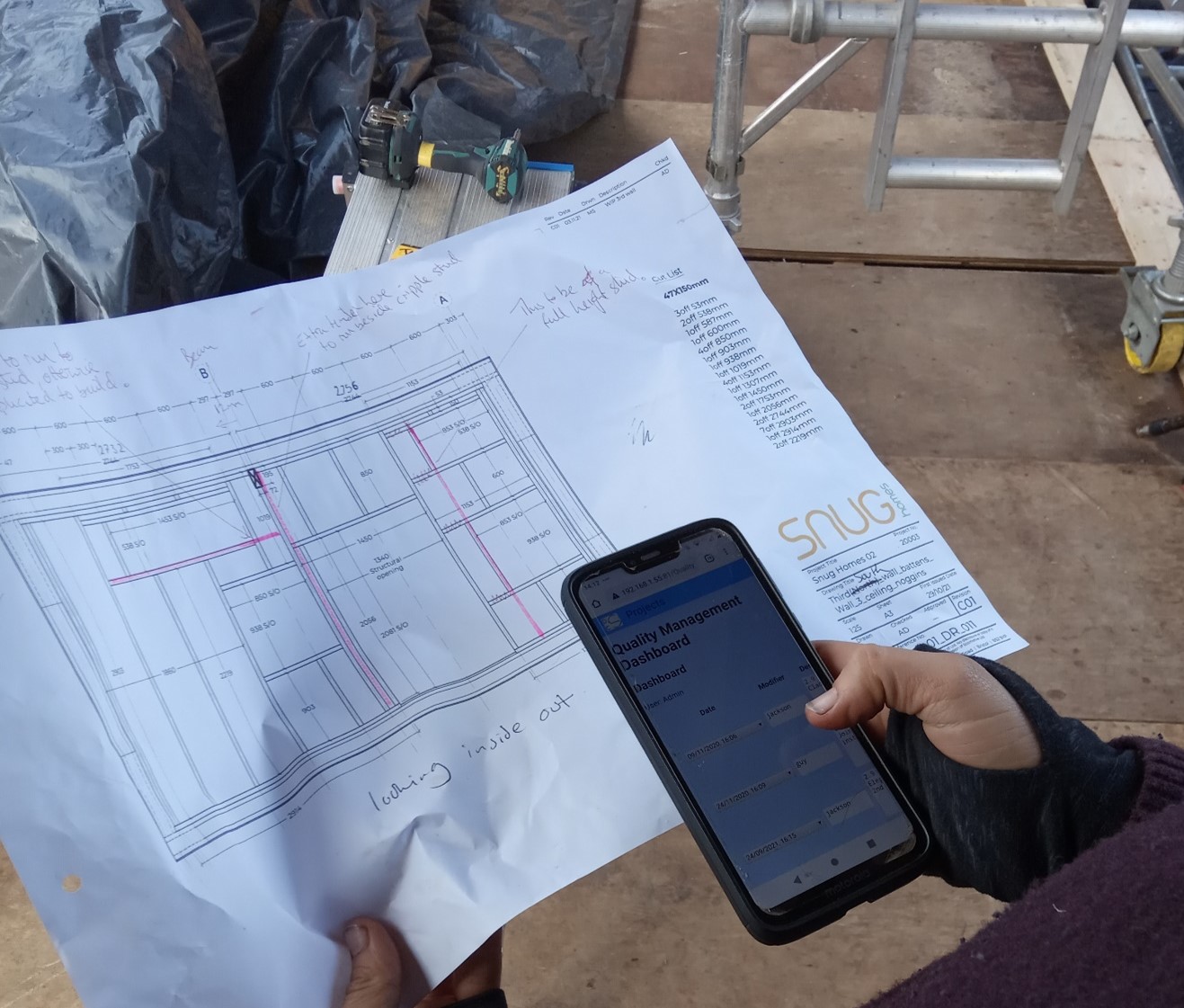
The Digital Construction on a Shoestring Project is derived from Digital Manufacturing on a Shoestring. The project focuses on breaking down the barriers in digital construction, such as cost and complexity, by developing individual digital solutions for which the total cost of deployment is kept low. The programme centres around the Manufacturing and Construction phase of the RIBA Plan of Work including suppliers and off-site construction SMEs, and on-site construction SMEs to increase digital capabilities across all the construction sector’s SMEs and thus ensure the entire sector can benefit.
The project follows the Digital Shoestring Approach to identify digitalisation priorities of construction SMEs and supports incremental adoption of individual digital shoestring construction solutions which can be integrated iteratively. The solutions are designed and developed based on a simple structured procedure and deployed to companies by following step-by-step instructions. The project has so far identified the top ten priority digital solutions required by suppliers and off-site, and on-site construction SMEs through a set of digital requirements workshops.
For further information please visit the research profile and blog post about the project.
People: Prof. Duncan McFarlane, Dr. Gökçen Yilmaz, Liz Salter, Jan Kaiser
7. Digitally Optimised Through-Life Engineering Services (DO-TES)

Original Equipment Manufacturers (OEMs) are pursuing Through-life Engineering Services (TES) for their customers while maintaining the product’s function over the entire lifecycle. This allows the OEMs to boost low-cost service values as well as ambitious benefits in the competitive global market. This ambitious project is called Digitally Optimised Through-Life Engineering Services (DO-TES) that embrace legacy TES practices with digital technology, including prognostics, and logistics and inventory management. The DO-TES project is led by OEM aerospace partners (Rolls-Royce UK and BAE System), with a consortium of leading universities (University of Cambridge and Cranfield University), software platform providers (ANSYS) and market disseminators (CFMS).
For more information about this project and its outputs, visit the project’s website.
People: Associate Prof. Alexandra Brintrup, Dr. Kwangkyu (Alex) Yoo and Dr. Liming Xu
Project partners: Rolls Royce, BAE Systems, ANSYS, CFMS, Cranfield University
8. Airline Performance & Disruption Management Across Extended Networks (APEMEN)
APEMEN (Airline Performance & Disruption Management) is a research project carried out in collaboration with Boeing. This project is exploring how short term optimisation and disruption management strategies can be better used to cater for within-day airline operational delays. The specific focus of the project is on areas such as fleet, passengers, crew, dispatch and navigation and their interface to other short term adjustments in areas such as maintenance, airspace, ramp and airport operations.
People: Prof. Duncan McFarlane, Associate Prof. Alexandra Brintrup, Dr. Alena Puchkova, Dr. Anna Ledwoch
Project partner: Boeing
9. Virtual Intelligent Production, Procurement and Prediction system (VIPr)
A 3-year project funded by Boeing, which aimed to look at challenges that manufacturers face if suppliers do not deliver an assembly or component on time and at the right quality.
10. Materials and Process Tracking and Analysis for Production Efficiency (MaPTAPE)
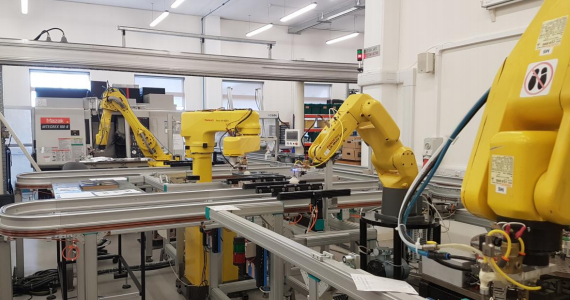
An industrial project funded by Boeing to develop and implement a flexible tracking system and information architecture, for resilient production operations. The project brought together various tracking and direct part marking technologies with IT infrastructure to track materials and the associated process parameters in production. Additionally, the data captured from the system was used for advanced data analytics to analyse the root causes of quality problems and reliability prediction for production resources.
People:
Prof. Duncan Mcfarlane, Alan Thorne, Dr. Raj Srinivasan, Simon Senitt
11. Dynamic and Adaptable Supply Chain Logistics System (DASHLog)
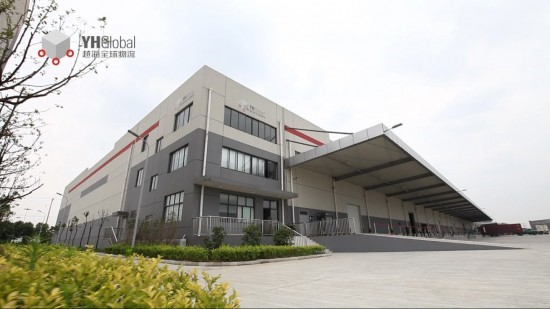
The Dynamically Adaptable Supply Chain Logistics (DASHlog) project started in March 2017 and continued DIAL’s research with YH Global Supply Chain Co., Ltd. The vision of the project was to enable YH Global to improve organisational performance by adapting quickly to new requirements, adapting to requirements from a greater number of projects/clients, and systematically supporting project variations more closely in IT and operations.
This was achieved by investigating to what extent the company could operate in “different modes” for both the current operations and IT systems. Switching between modes was guided by an evaluation engine and a data analytics component (the latter was also used to provide advanced reporting to clients). The following scenario illustrates one aspect of the work:
Overall, the project aimed to deliver a demonstrator prototype software system showing how and when to switch between modes, and documented operational procedures showing how operations could be modified to take advantage of the new modes. It also aimed to support YH Global in the development and implementation of their new IT architecture, which was designed as part of the previous ITALI project with YH Global.
People:
Project PI: Prof. Duncan McFarlane
The project was led by Dr Philip Woodall and collaborated with Dr Vaggelis Giannikas at Bath University.
Researchers: Jorge Merino, Shuya Zhong
Project partner: YH Global Supply Chain Co., Ltd
12. Industrial uses of internet of things
An early initiator of the ‘internet of things’ concept; DIAL examined its role in manufacturing.
13. Integrated Design, Manufacturing and Assembly D(FMA)2
This project aimed to investigate how we could improve the resilience of novel construction elements and their associated design and manufacturing processes.
14. Resilient Architectures for Design and Manufacture
A 4-year project funded by the Department of Business Innovation and Skills looked at ‘how the resilience of novel construction elements and their associated design and manufacturing processes can be improved'?
15. Achieving Leveraged Advantage from Distributed Information (ALADDIN)
A 3-year project funded by the Boeing Company, looked at how the vast amounts of data Boeing deals with on a daily basis could be turned into a more valuable commodity for the business.
16. Aerospace ID Technologies programme (Aero-ID)
The Aerospace ID Technologies Programme was an industry led independent research initiative that provided answers to key deployment challenges to automated ID in the Aerospace sector. It was made up of a number of discrete, finite research projects each centred on a particular aspect of the technology and its application.
17. Building Radio Frequency IDentification for the Global Environment (BRIDGE)
BRIDGE was a European Union funded 3-year Integrated Project addressing ways to resolve the barriers to the implementation of RFID in Europe, based upon GS1 EPCglobal standards.
18. Disruption Tolerant Automated Lean Factories (DisTAL)
A 3-year project funded by Boeing, to improve the resilience of manufacturing automation in the face of operational disruptions.
19. Information Quality for Asset Management (IQAM)
IQAM was an EPSRC funded project that aimed to develop a methodology and tool to quantify and optimise information quality in the context of asset management to improve the economic sustainability of asset-intensive organisations.
20. IT Architectures for Logistics Integration (ITALI)
Developing new logistics IT architectures to enable more efficient and flexible logistics operations.
21. Failure Diagnosis and Fault-Data Management for Modern Locomotive Systems
Funded by Hitachi Europe Ltd, this project aimed to develop an intelligent, adaptive, self-learning fault data management approach and fault-diagnosis tool for train systems.
22. Organising Production Technology Into Most Responsive States - 3D Print Machine Enabled Networks (OPTIMOS PRIME)
A major challenge for manufacturing supply networks is that of making operations lean for cost and efficiency reasons while at the same time maintaining a level of responsiveness that enables the organisation(s) to meet demands for customised products, fluctuating requests for spares and repairs and to demonstrate resilience to delays in the supply base in manufacturing operations.
23. PROduct lifecycle Management and Information tracking using Smart Embedded systems (PROMISE)
PROMISE aimed to develop a new generation of PLM system that uses smart embedded IT systems, allows the seamless flow and transformation of data and information to knowledge and to allow all actors in a product's lifecycle to manage and control product information at any moment of its lifecycle, at any place in the world.
24. Repair Services for Domestic Appliances
Over the last 30 years, the replacement of failed domestic appliances with new ones has become a relatively inexpensive, quick and easy solution while repair has become a more costly and time-consuming option.
25. Self-Serving Assets In A Highly Networked Environment (SAHNE)
The SAHNE project aimed to bring the intelligent asset vision alive in the aerospace sector, where parts are self-aware, and have the goal to maximise their life in service by contacting, selecting and procuring service providers autonomously. The project was carried out in collaboration with the Boeing Company.
26. Strategies for Asset Information Management (SAIM)
SAIM aimed to develop and test new strategies for managing information associated with complex engineering assets. In particular, we aimed to examine and demonstrate the impact of key emerging technologies such as Radio Frequency Identification (RFID) on the effectiveness with which these assets are managed throughout their lifecycle - particularly during the usage and retirement phases.
Centre for Smart Infrastructure and Construction projects:
1. Risk-Informed Bridge Management

This research project provided rational means to enable asset managers to evaluate the factors that affect bridge failure risk, select, and prioritise appropriate mitigation measures, and improve the allocation of scare monitoring and maintenance resources. It is developing risk-informed, data-driven, and value-based approaches to better monitor and manage the ageing bridge infrastructure network in the context of constrained budgets and the challenges of climate change. The brings focus to the development of a series of tools that enable bridge owners and managers to better understand the risks associated with bridge monitoring, enabling informed decisions about balancing the cost of monitoring and value of information gained from data capture against the risk of bridge failure and associated socio-economic and environmental effects to the wider transport system.
For more information about this project and its outputs, visit the project’s website.
People: Prof. Ajith Parlikad, Dr. Manu Sasidharan
2. Design for Disaster Relief and Resilience
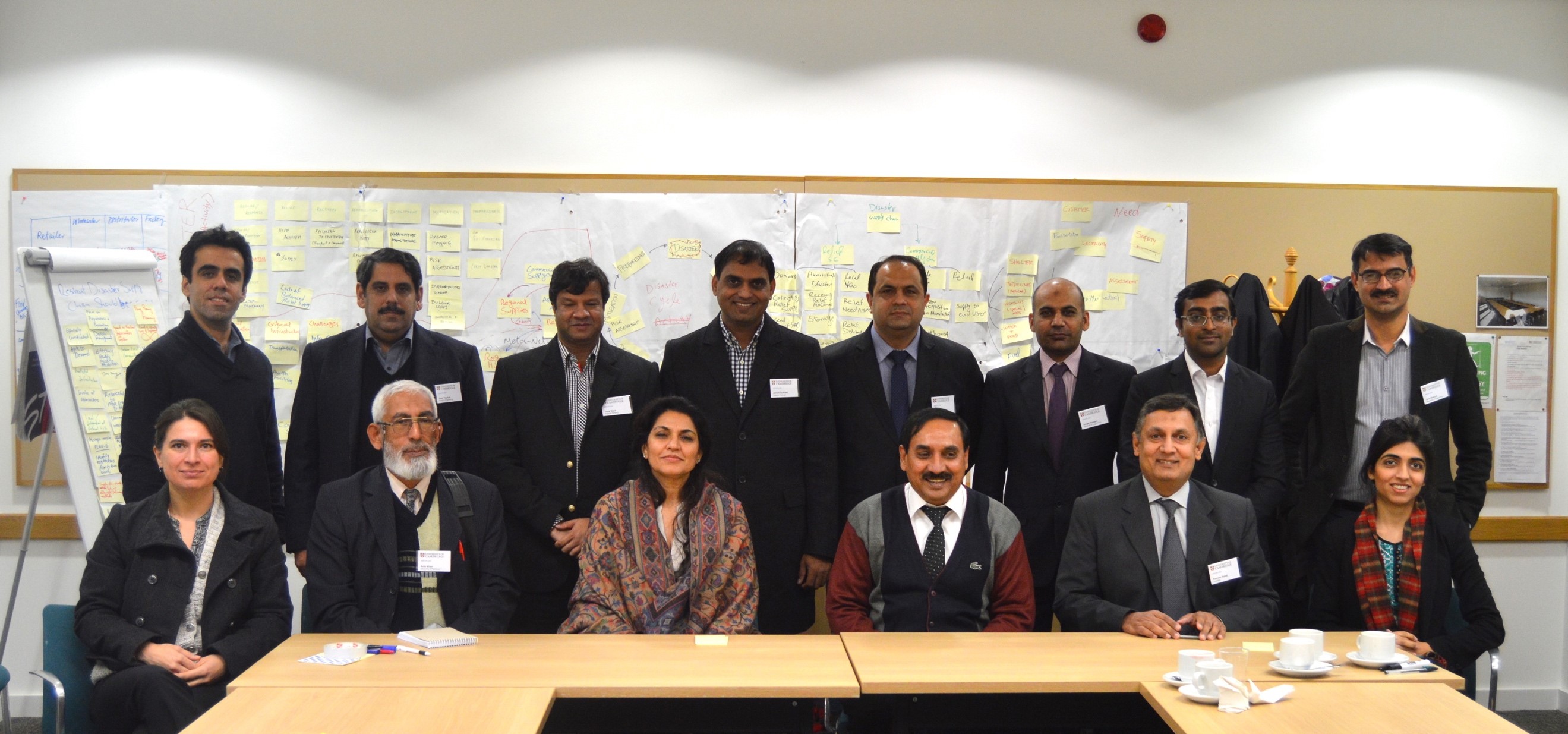
The Disaster Resilient Supply Chain Operations in South Asia (DROPS) project started in September 2016 and completed in March 2017. This project was funded by an EPSRC Global Challenges Research Fund Institutional Grant, in collaboration with Cambridge Engineering Design Centre and Department of Architecture.
The vision of the project was to improve disaster supply chain operations by enabling resilience. Natural Disasters have affected 377 million people with worldwide economic damage of $92.38 billion in 2016 – both numbers are increasing over years (CRED, 2016). Whenever there is an earthquake, flood, heat wave or heavy snow, disaster management (response-recovery-mitigation-preparation) organisations provide medicine, food, water and shelter. However, a particular challenge is that the disaster management operations (DMOs) are disrupted due to disconnectedness between commercially established and ad hoc disaster management supply networks requiring future-proof DMOs aimed at saving lives, rebuilding infrastructure and society.
As part of this project, a novel DROPS framework of considering resilience, supply network integration and big data analytics in DMOs was proposed (Masood et al 2017). This is based upon a 5-day International Workshop organised as part of this project at Cambridge during 28 Nov– 2 Dec, 2016. The workshop gathered senior practitioners, government officials and academics involved in disaster preparedness, mitigation and relief with expertise in aspects of supply chain operations, resilience and big data analytics. During the workshop, current practices, issues, challenges and key factors related to DROPS were explored. Earthquakes, floods, tsunamis and disease related disasters were discussed. Case studies and lessons learnt related to the project aims were presented on disasters and supply chain operations in Pakistan, Nepal, Bangladesh, Sri Lanka, India, New Zealand and USA.
People:
Project PI: Prof. Duncan McFarlane
The project was led by Dr Tariq Masood and collaborated with Dr Emily So in Department of Architecture.
Researcher: Dr Tariq Masood
Project partners:
Teradata, Telenor, Resurgence, IMC Worldwide, Pakistan Railways, National Disaster Management Authority (Pakistan), Economic Affairs Division (Pakistan), University of Engineering & Technology (Lahore & Taxila), National University of Sciences & Technology (Rawalpindi), Global Assessment Technologies, Bangladesh Red Crescent Society, University of Peshawar, Transways Logistics Solutions, Lahore University of Management Sciences, Texas A&M University
3. Resilient Architectures for Design and Manufacture
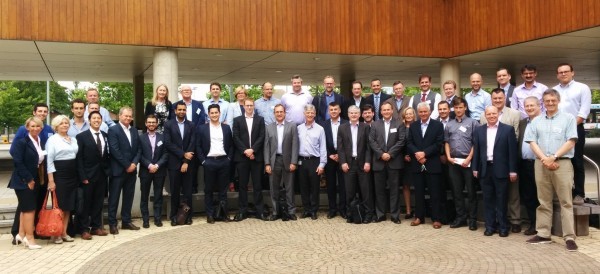
The Resilient Architectures for Design and Manufacture project started in 2015 as part of the Advanced Manufacturing Supply Chain Initiative – Advanced Manufacturing of Homes, Buildings and Infrastructure (AMSCI-AMHBI). The project aimed to address the gap in housing supply by creating a new Laing O’Rourke off-site manufacturing facility for 10,000 new homes each year and help deliver the UK Industrial Strategy for Construction, targeting 33% lower costs, 50% faster deliver, 50% lower emissions and 50% improvement in the import export trade gap.
The University of Cambridge team addressed the overarching question of how the resilience of novel construction elements and their associated design and manufacturing processes could be improved. Central to achieving this aim was the inherent importance of project management decision making, and the cross-team and cross-company information flow, design and production approaches and tools necessary to support effective decisions.
The project addressed the fragmented delivery approach of the construction industry by reviewing construction as manufacturing approaches, adopting the proven engineering tools and processes of the highly efficient automotive and aerospace industries while also developing new tools. The project delivered the understanding, tools and approaches required to support early design and production decision making in the manufacture of novel construction components in an advanced, highly automated, yet reconfigurable manufacturing plant. It also assisted the management of a stable supply chain for mechanical and electrical modules and integrated building and infrastructure assemblies.
People:
Project PIs: Prof. Duncan McFarlane, Prof. P. John Clarkson
The project was led by Dr Tariq Masood and collaborated with Cambridge Engineering Design Centre.
Researchers: Dr Tariq Masood, Dr Raj Srinivasan, Brian Robertson, Alan Thorne
Project partners:
Laing O'Rourke, Airedale, Apex Cables, Armstrong, Arup, Beckhoff Automation, British Gypsum/Saint Gobain, BRE, Crane, Crown House Technologies, Expanded, Explore Manufacturing, Fulcro, Grundfos, Hamworthy Heating, Hoare Lea, Select, SIG, Thorn Lighting, University of Sheffield Advanced Manufacturing Research Centre and WSP.
4. Infrastructure Futureproofing
Understanding and developing both the ability of infrastructure to be resilient to unexpected or uncontrollable events [e.g. those associated with climate change] and also the ability to adapt to required changes in structure and / or operations of the infrastructure in the future [e.g. expansion of capacity, change in usage mode or volumes] is challenging due to an uncertain future.
5. Information Futureproofing
The amount of information created and used in infrastructure and construction sectors is huge and diverse by nature. Organizations need to understand specific requirements for efficient information management throughout infrastructure life cycles and their supply chains.










